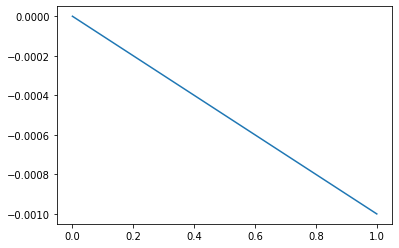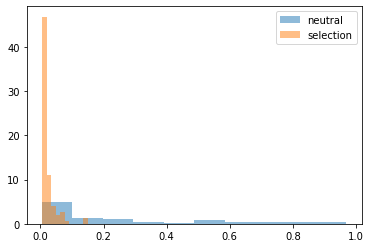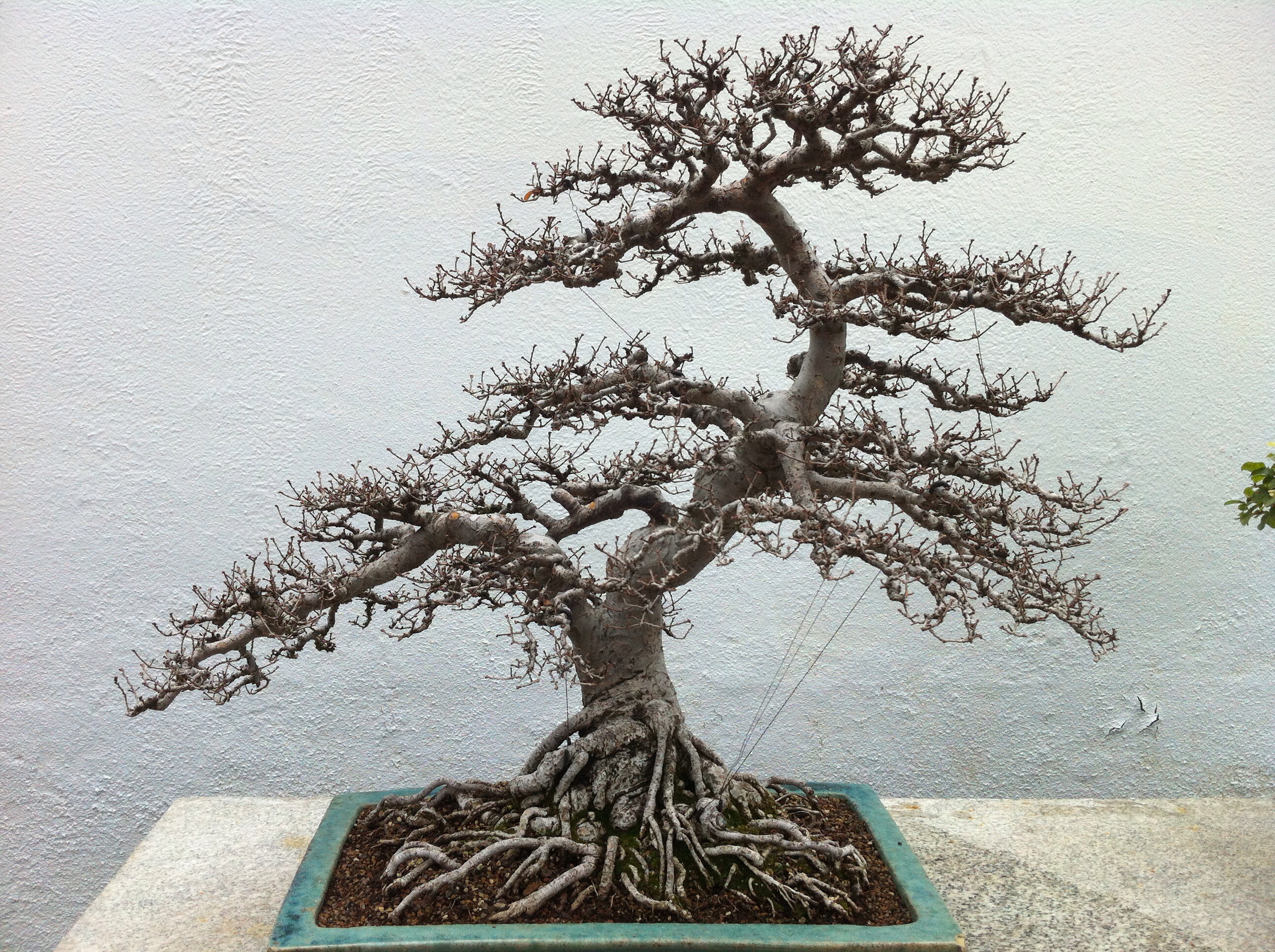Mutation
Contents
Mutation¶
Mutation and Evolution¶
Previously we learned about how selection can change the frequencies of alleles and genotypes in populations. Selection typically eliminates variation from within populations. (The general exception to this claim is with the class selection models we have called “balancing” selection where alleles are maintained in the population by overdominance, habitat-specific selection, or frequency dependent selection). If selection removes variation, soon there will be no more variation for selection to act on, and evolution will grind to a halt, right? This might be true if it were not for the reality of mutation which will restore genetic variation eliminated by selection. Thus, mutations are the fundamental raw material of evolution.
The basic model of mutation that we will study is one way mutation. This is when one allele through mutation can turn in to another such that
\(u\) here represents the mutation rate, the probability that a mutation from \(A_1\) to \(A_2\) occurs during a meiosis.
It should be obvious that mutation will change allele frequencies. This is true because there is a constant flux from \(A_1\) to \(A_2\) purely as a result of this mutation process. We can study the change in allele frequency due to mutation in a very similar way to how we studied the change in allele frequency due to selection. Consider a population with frequency of the \(A_1\) allele \(p\). In the next generation, after a round of mutation, each \(A_1\) allele must have been \(A_1\) in the current generation and it must not have mutated. That is
Now lets turn our attention to the change in allele frequency in one generation due to mutation as we did previously for selection
notice that our notation– \(\Delta_up\) – emphasizes the source of the change in allele frequency is mutation. Let’s plot this as a function of \(p\)
import numpy as np
import matplotlib.pyplot as plt
def delta_p_u(u, p):
return -u * p
x = np.linspace(0, 1, 100)
frequencies = delta_p_u(0.001, x)
plt.plot(x, frequencies)
[<matplotlib.lines.Line2D at 0x7fb6f39643a0>]

right! decreasing for all \(p\) except the case where \(p = 0\)!
Exercise write a function to explore the dynamics of allele frequency dynamics of this model over time. It should take an initial frequency and a mutation rate as it’s input, and output the allele frequency in subsequent generations (perhaps the number of generations could be an input)
This sort of unidirectional mutation acts to consistently decrease the frequency of the \(A_1\) allele from generation to generation. If we instead were to study two way mutation, the mutational flux would depend on the proportional rates to and from \(A_1\). So mutation, although it is a random process with respect to target, leads to deterministic effects on allele frequencies. Neat huh?
Mutation rates per generation are very very small. You know this intuitively- think about cloning plants from cuttings. In Drosophila, which is one of the best studied animals from the perspective of rates of spontaneous mutation, the mutation rate per generation per nucleotide is on the order of \(10^{-9}\). This means that mutation changes the frequency of alleles at a very slow rate. If we assume that there is sufficiently strong selection against the \(A_2\) allele (i.e. \(w_{11} >> w_{22}\)), then we can further approximate our change in allele frequency due to mutation
because \(q \approx 0\). So in the case of a deleterious \(A_2\) allele, we can see that the change in allele frequency due to mutation is independent of allele frequencies. This is our first hint that mutation and selection might combine in interesting and important ways.
Mutation-Selection Balance¶
We can imagine mutation and selection as opposing forces which might come to some equilibrium in terms of the number or frequency of deleterious alleles within a population. To make this concrete think about the human genetic disease cystic fibrosis (CF). CF is a very serious genetic disorder in which a transmembrane protein in lung epithelium cells called CFTR is non-functional. Hundreds, if not thousands of separate mutations in CFTR lead to CF, thus we could imagine that there is a certain, appreciable rate of mutation to CF. If each of these mutations is deleterious (i.e. they cause disease) then over generations they should be selected out of the population. Thus mutation will inject CF mutations into the population, but selection will remove them- can we study this as an equilibrium process?
Our approach will be to study each of our evolutionary forces in isolation, and then combine them to figure out how they interact. Let’s start by considering the change in allele frequency due to selection that we studied in lecture 7, but this time we will approximate it under the assumption that \(q \approx 0\)
This approximation goes down the road because when \(q \approx 0\), \(p \approx 1\), \(\bar{w} \approx 1\), and we can ignore all terms of order \(q^2\).
Now lets combine the forces of selection and mutation on the change in frequency of \(A_1\) using the approximations we have just derived (equations 3 and 5). At equilibrium that change in allele frequency due to the combined actions of mutation and selection must equal zero. That is
so the equilibrium frequency of the \(A_2\) is
Thus we see that deleterious (e.g. disease) allele frequencies are determined by both the mutation rate to those alleles and their selective effects in heterozygotes. As we saw earlier, new mutations overwhelmingly are found in heterozygous states, so it’s perhaps not surprising that \(h\) should dominate the fate of deleterious alleles.
%load_ext slim_magic
import pandas as pd
import numpy as np
from matplotlib import pyplot as plt
from IPython.display import display, SVG
%%slim_stats_reps_cstack 100 --out neutral
initialize()
{
// set the overall mutation rate
// no mutation in this simulation
initializeMutationRate(0.01);
// m1 mutation type: neutral
initializeMutationType("m1", 0.5, "f", 0.0);
// single locus simulation
// g1 genomic element type: uses m1 probability 1
initializeGenomicElementType("g1", c(m1), c(1.0));
// uniform chromosome of length 1 site
initializeGenomicElement(g1, 0, 0);
// uniform recombination along the chromosome
initializeRecombinationRate(0);
suppressWarnings(T);
}
// create a population of 100 individuals
1 {
sim.addSubpop("p1", 100);
// sample 100 haploid genomes
target = sample(p1.genomes, 100);
// add a mutation to those genomes
// H_0 = 0.5 here
target.addNewMutation(m1,0, 0);
cat("generation,p\\n");
}
1:1000 late(){
// allele freq of A_1 allele in current gen
freqs = sim.mutationFrequencies(p1);
// each gen print out the gen and the allele freqs
catn(sim.generation + "," + freqs[0]);
}
// run to generation 0
300 late() {
sim.simulationFinished();
}
%%slim_stats_reps_cstack 100 --out selection
// set up a single locus simulation of selection
initialize()
{
// set the overall mutation rate
// no mutation in this simulation
initializeMutationRate(0.01);
// m1 mutation type: neutral
initializeMutationType("m1", 0.5, "f", -0.1);
// single locus simulation
// g1 genomic element type: uses m1 probability 1
initializeGenomicElementType("g1", c(m1), c(1.0));
// uniform chromosome of length 1 site
initializeGenomicElement(g1, 0, 0);
// uniform recombination along the chromosome
initializeRecombinationRate(0);
suppressWarnings(T);
}
// create a population of 100 individuals
1 {
sim.addSubpop("p1", 100);
cat("generation,p\\n");
}
1:1000 late(){
// allele freq of A_1 allele in current gen
freqs = sim.mutationFrequencies(p1);
// each gen print out the gen and the allele freqs
if( length(freqs) > 0)
catn(sim.generation + "," + freqs[0]);
}
// run to generation 0
300 late() {
sim.simulationFinished();
}
plt.hist(neutral[-1:].values.flatten(), density=True,alpha=0.5, label="neutral")
plt.hist(selection[-1:].values.flatten(), density=True,alpha=0.5, label="selection")
plt.legend()
plt.show()

